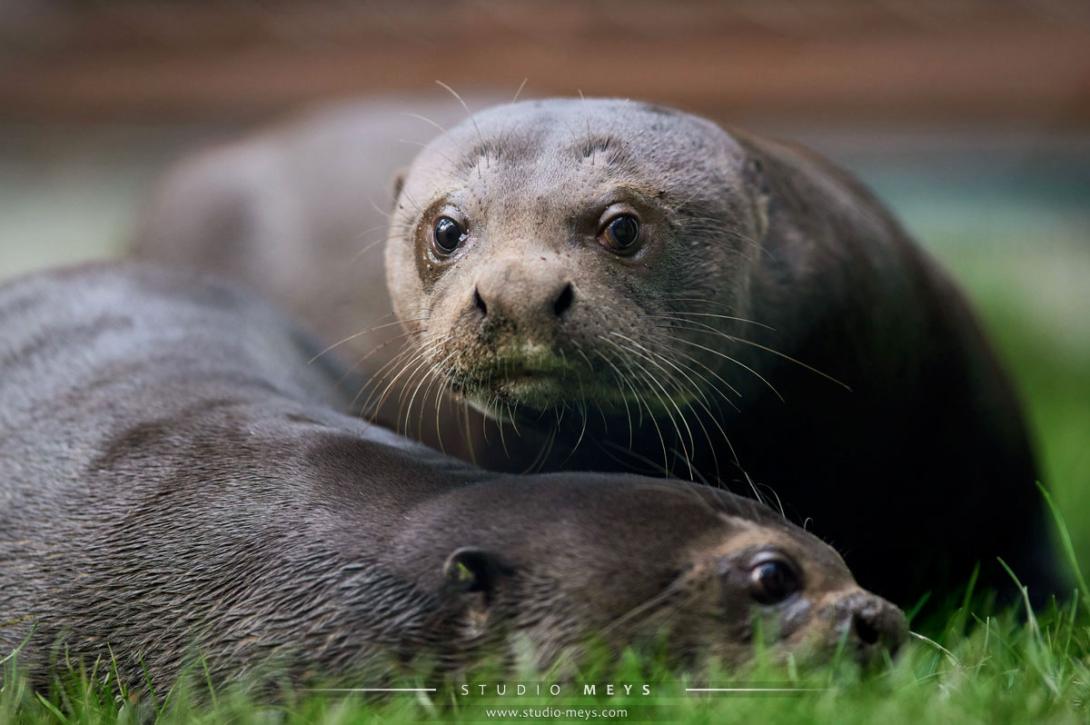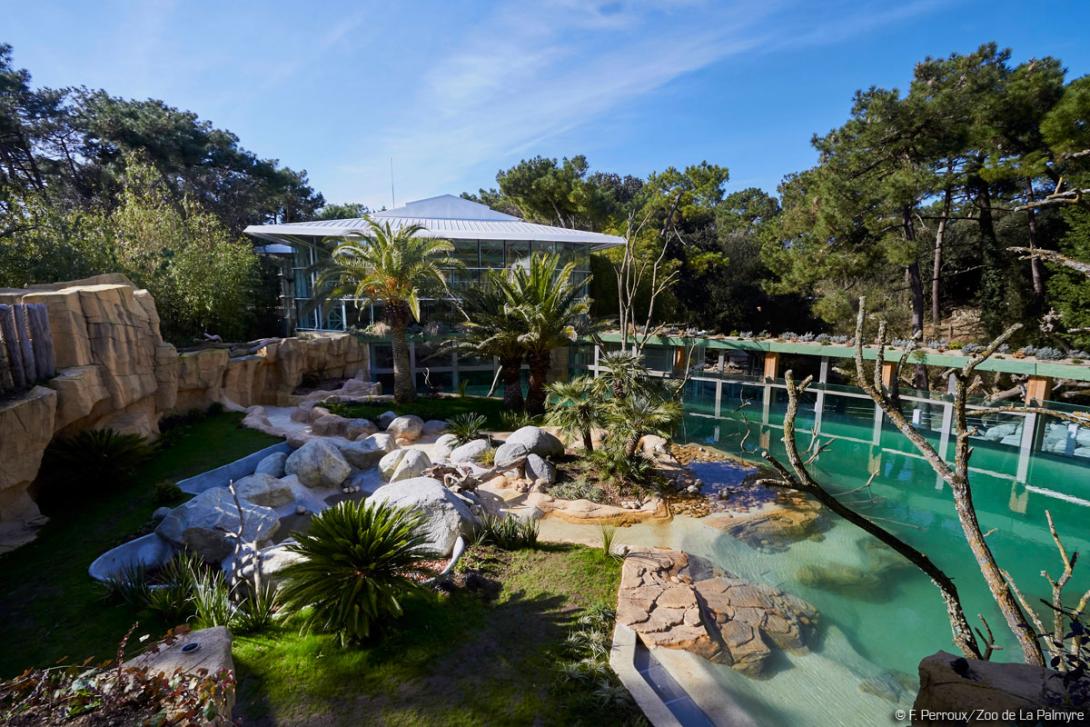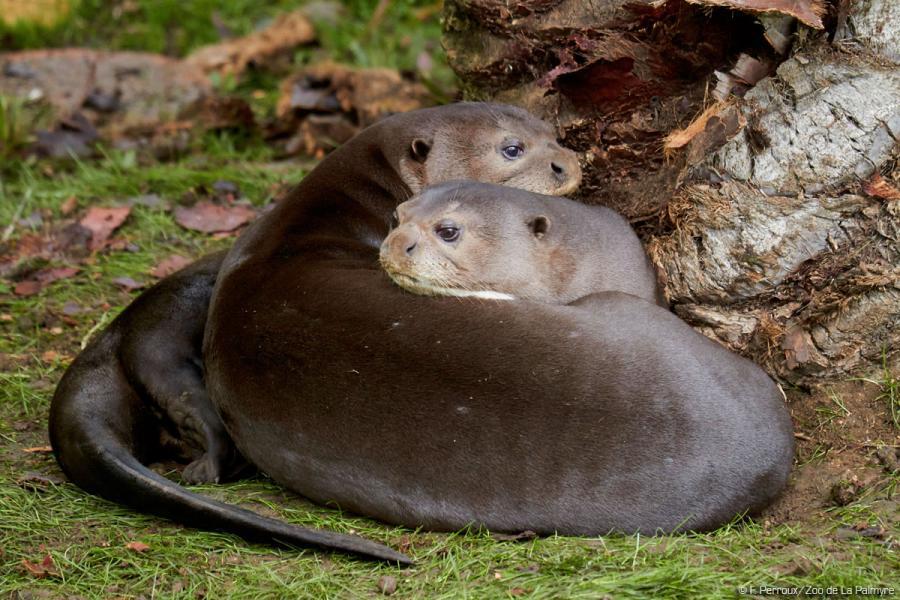Meet the giant otters!

The Giant otter (Pteronura brasiliensis), one of South American wetlands’ most iconic animal and the largest representative of the Mustelidae family, has taken up residence at the zoo in an enclosure that has been completely redesigned to accommodate the species under optimum conditions.

The exhibit consists of a building with burrows intended for reproduction and a vegetated enclosure that includes a large pool that will allow the visitors to observe the giant otters when they move underwater.

With a length that can reach almost 2m, the Giant otter is the largest of the 13 otter species recorded. Its slender body, webbed feet and powerful flattened tail allow it to propel itself underwater at high speed. Mainly piscivorous, it eats between 3 and 4kg of fish every day.
Giant otters live in small family groups in the tropical forests and wetlands of South America. The groups are composed of a breeding pair, several sub-adults and cubs. The female gives birth to a litter of 1 to 4 cubs raised in a burrow called a “catiche” from which they only come out around the age of 6 weeks. They are weaned at around 9 months and reach adulthood at 2.5 years.
The Giant otter is a very social and playful animal: it spends a lot of time grooming, romping and resting when it doesn’t hunt its preys.

Giant otters have long been hunted for their skin and had almost disappeared in the early 1970’s. The end of the trade in skins and national laws to protect the species have allowed some populations to recover. However, the giant otter remains threatened by the destruction of its habitat, overfishing which leads to the scarcity of its prey, water pollution (due to gold mining and the use of pesticides), diseases transmitted by domestic animals or badly supervised tourism. The species is listed as "Endangered" on the IUCN Red List.